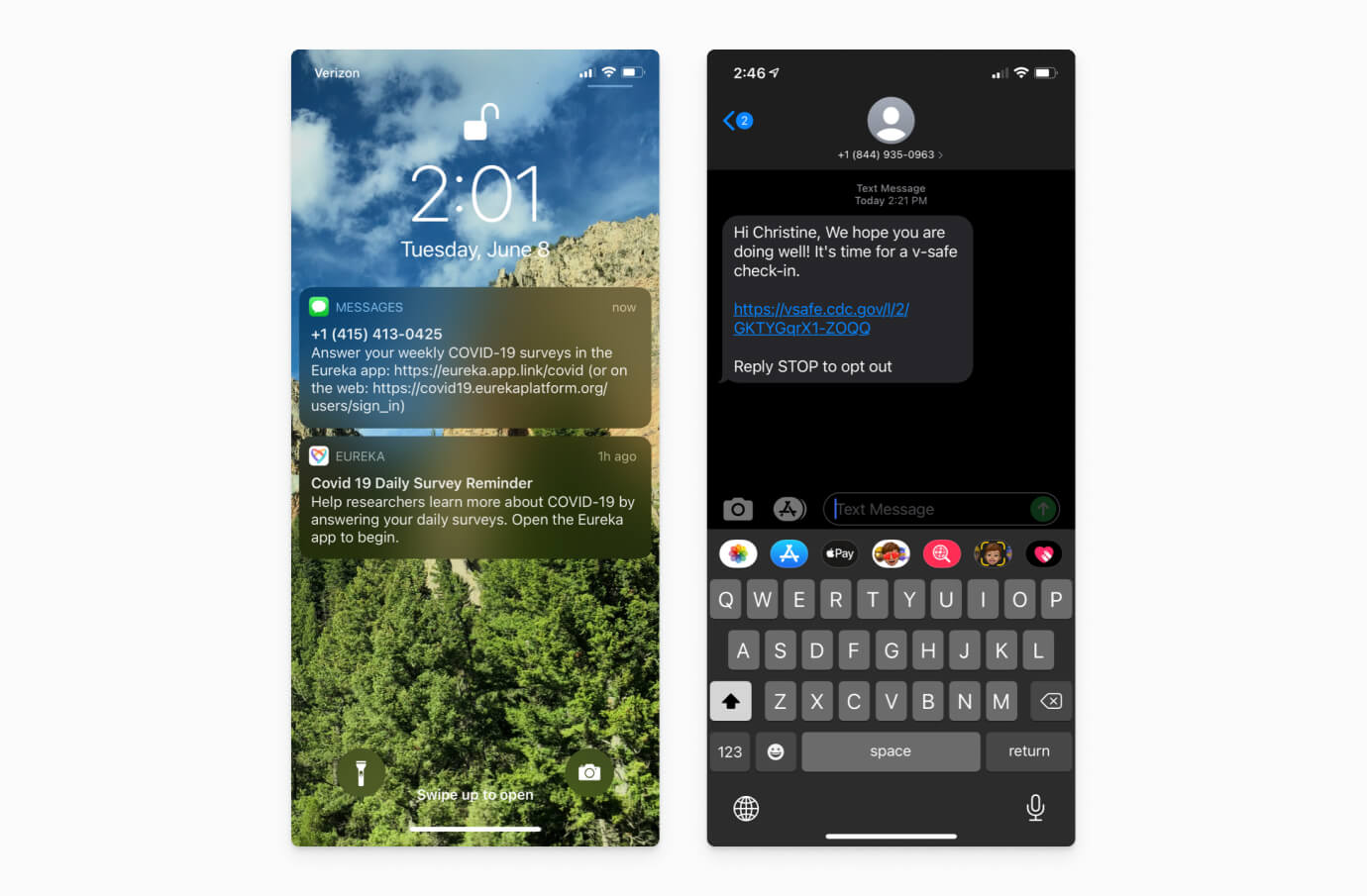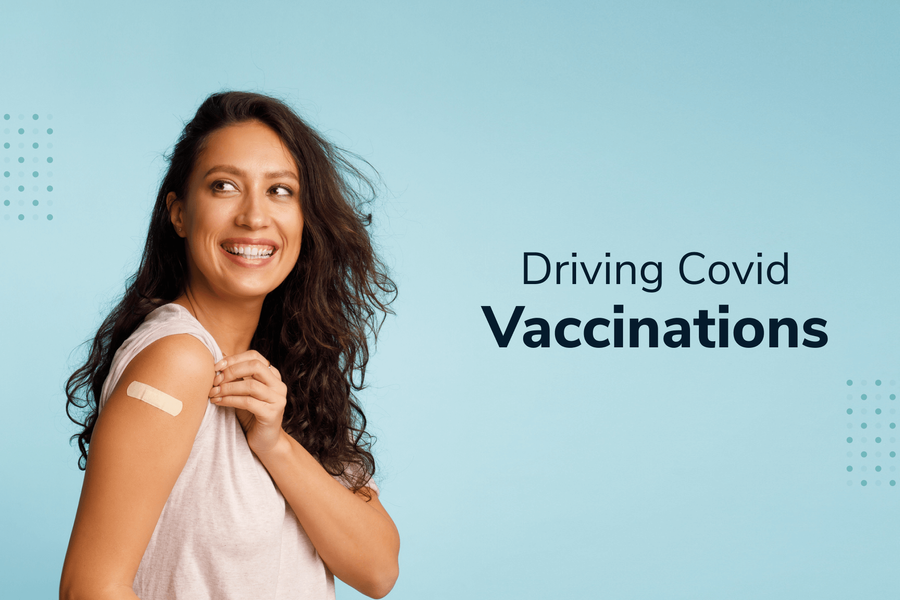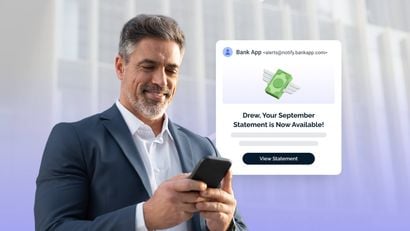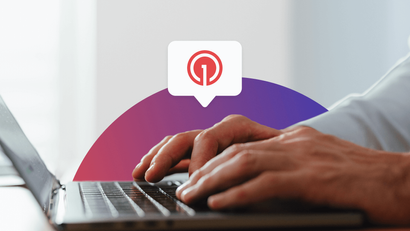The digital health sector showed promise as a new frontier for medical communications and citizen science long before the pandemic. Even so, the healthcare industry has been notoriously slow to adopt new technology for a variety of reasons.
Yet as the pandemic unfolded, the adoption of telehealth solutions accelerated. In a socially-distant world, it became clear that digital, real-time communications between healthcare entities and patients were necessary and possible with channels such as mobile push and SMS notifications. These channels allowed for direct communication with patients about a range of needs, including personal health status, remote symptom monitoring, behavioral health interventions, appointment scheduling, and covid-related exposure tracking.
In addition, the widespread adoption of telehealth solutions suggests that Americans may be more receptive to the use of new technology in the healthcare experience. Whereas many industry leaders worried that technology adoption could result in a more impersonal patient experience or a reduction in the quality of care, the pandemic has shown that technology adoption might actually help combat these risks.
Now, after mass vaccine rollouts and widespread efforts to increase vaccine access and awareness, messaging channels are at the forefront of appointment scheduling and patient communication.
Pre-Pandemic Uses of Push Notifications and SMS in Telemedicine
Prior to the pandemic, push notifications had been used to encourage flu vaccinations through tactics such as geotargeting users and incentivizing action through loyalty points. One large-scale study confirms that mobile platforms were effective in increasing population-level vaccination rates, concluding that “such technologies can be used to promote and effect healthy behaviors at population scale.”
According to multiple studies as early as 2006, text messaging has also been proven to increase clinical attendance, including primary care and outpatient visits. Not only are text messages a proven means of increasing childhood vaccination rates, but they also expand vaccine access to a broader, underserved population.
Exploring the Impact of Messaging Tools on COVID-19 Vaccinations
After reviewing the existing research around messaging channels and vaccines, we sourced help from the independent online survey provider Pollfish to gain more insight into the ways that messaging channels impacted vaccination rates among respondents. The survey included 1,000 individuals ages 18 and older who scheduled a COVID-19 vaccination appointment in the United States.
We asked participants about their experience scheduling a COVID-19 vaccination appointment, including whether they opted-in to receive digital notifications, their appointment eligibility and availability, reminders received after scheduling an appointment, and follow-ups.

Key Findings
- 65% of respondents who booked vaccine appointments did so with the help of push notifications or text messages.
- 74% of respondents opted-in to receive notifications, messages, or alerts (via email, website browser alerts, mobile app push notifications, or SMS/text messages) to stay updated on vaccine eligibility and available appointments.
- 67% found alerts and messaging like mobile or web push notifications, text messaging, or email helpful in reminding them to get vaccinated or helping to locate vaccine appointments.
- 54% signed up or opted in to receive alerts and notifications from public health or government agencies, the most popular source for information on getting a vaccine appointment. Other top resources identified were pharmacy websites or apps and local mass vaccination sites.
- 54% of our respondents voiced that they preferred receiving COVID updates and vaccine information via text message alerts over other channels. They rated their second and third favorite messaging channels for this content as email and push.
Post-vaccine Education and Follow-Up Efforts
Our results also demonstrate how messaging tools act as an essential conduit for educating the public, such as side effect reporting, exposure tracking, sending reminders for future booster shots, and quickly disseminating information across geographies. Our survey found the following:
- 60% of respondents signed up to receive texts or other notifications to follow up on a vaccine experience, such as services offered by the vaccine site or the CDC’s Vsafe vaccine follow up.
- 59% opted in to receive push notifications on their phone about potential COVID exposures.
- If required to obtain a booster shot in the future, 51% said they’d be interested in receiving information via text message alerts, followed by email and push notifications as their other top channels.
This survey underscored the utility of messaging and alert systems for healthcare organizations and government entities alike amid a public health crisis. In times like these, timely and essential information needs to be dispersed on a mass scale. Our results revealed how push notifications and text alerts played a key role in getting the public vaccinated by helping people understand their eligibility and book appointments. Beyond the vaccination process, notifications have also proven to be a powerful medium for encouraging symptom tracking, providing exposure alerts to mitigate virus spread, and keeping the public informed about changing regulations.
Send Essential Alerts with OneSignal
OneSignal is designed to help you send notifications and seamlessly manage communication across various channels, including mobile push notifications, web push notifications, bulk SMS, in-app messaging, and email. Our platform is quick to set up and makes it easy to customize and automate your messaging strategy without doing any development work. If you don't have a OneSignal account, you can create one for free and start sending push notifications today. Don't take our word for it — simply sign up and see for yourself!
Create a Free Account



